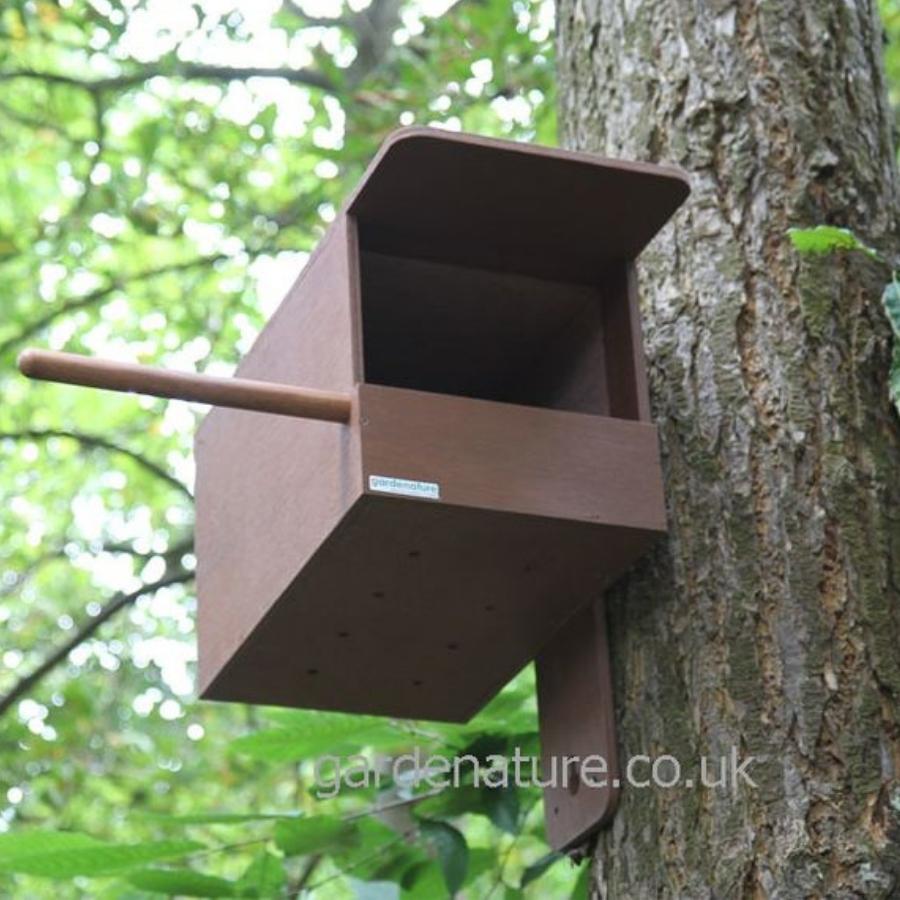Kestrel Nest Box
Kestrel Nest Box
Couldn't load pickup availability
Kestrel Nesting Box
Please note: To offer a more environmentally friendly product, our Kestrel Nesting Boxes are no longer treated with resin. The colour of the product you will receive is significantly lighter than the one pictured. Please see our A-Frame Owl Box for colour reference.
Kestrel Nest Box Dimensions:
H310 x W300 x D630mm (incl. roof overhang)
Kestrel Facts:
Kestrels are the most common birds of prey in Europe and can often be seen perching high on tree branches, telephone wires, road-signs and tall buildings while they search for prey.
Although their numbers have declined in Britain over the last few years, their habit of hovering, particularly near motorways, means they are also one of the easiest to spot. While hovering, they have an extraordinary ability to keep their head totally still, even in strong winds. This allows them to pinpoint and catch small mammals and birds by sight alone.
A kestrel is capable of locating its prey at remarkable distances; it can see and catch a beetle 50 meters from its perch. Kestrels need to eat 4-8 voles a day, depending on the time of the year and the amount of energy consumed while hover-hunting.
The Kestrel is a protected species; at last count there was approximately 50,000 breeding pairs in the UK. Kestrels tend to stay within their home ranges throughout the autumn and winter, with breeding starting in February.
Kestrels are adaptable in their use of nest sites, but do not build their own nests. Old or disused nests of crows and other stick nesters are often used, as are ledges on cliffs and buildings. They are also regular hole-nesters and readily accept man-made nest boxes. The same nest site is often used in successive years with some sites used for decades.






